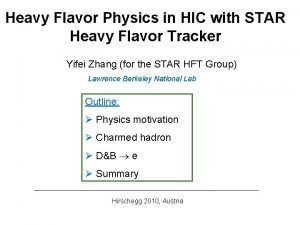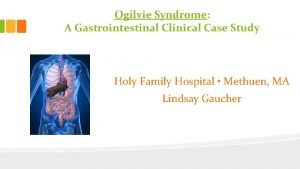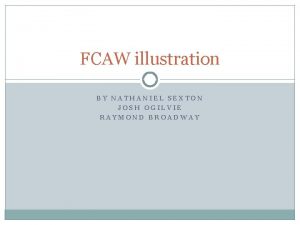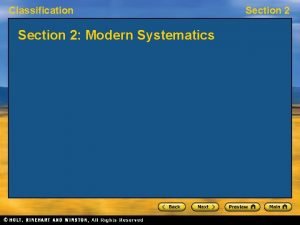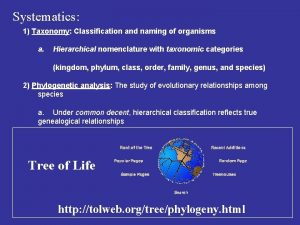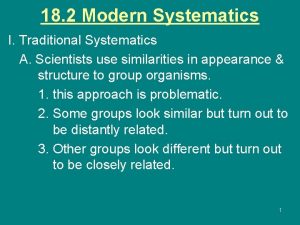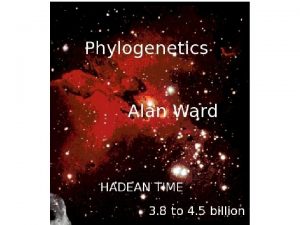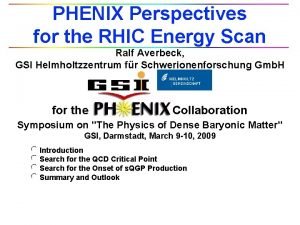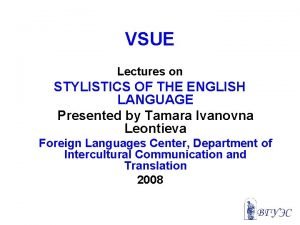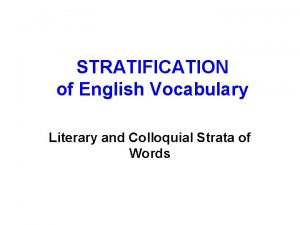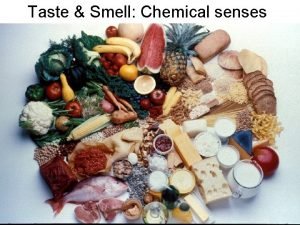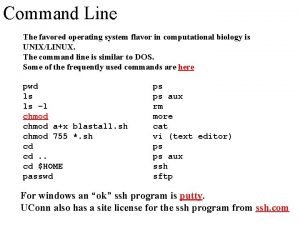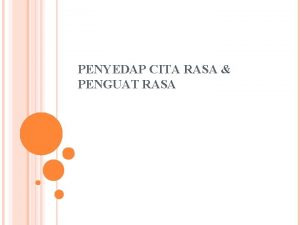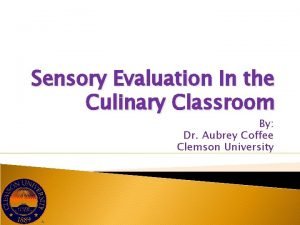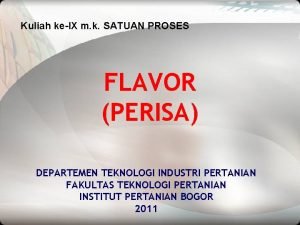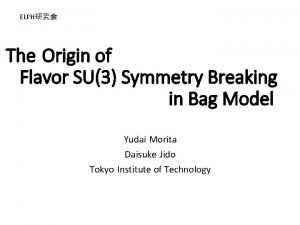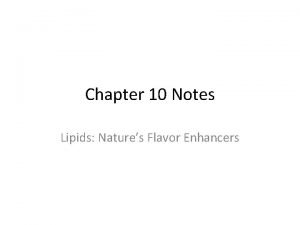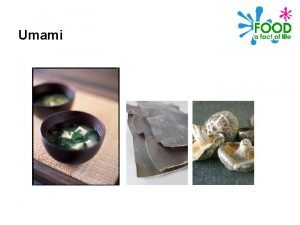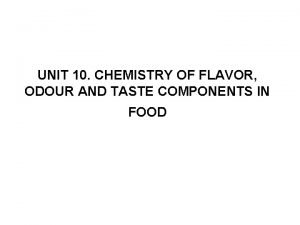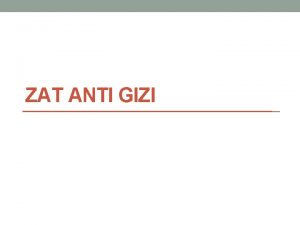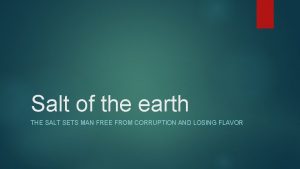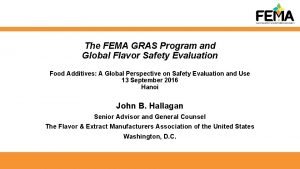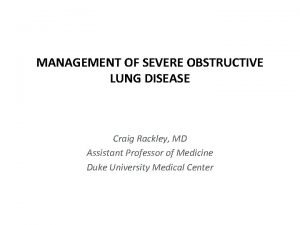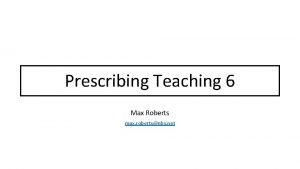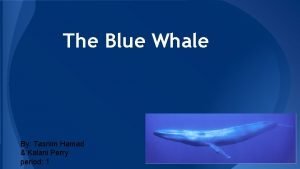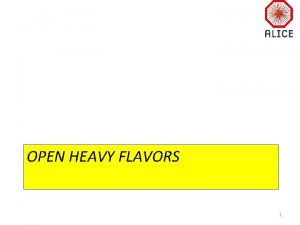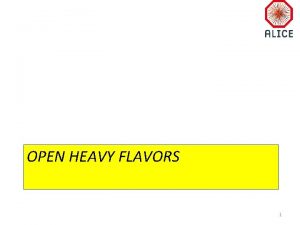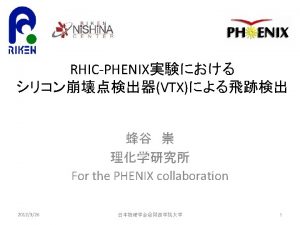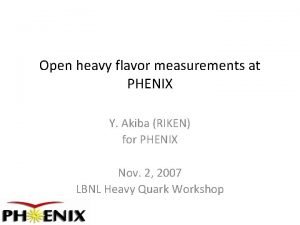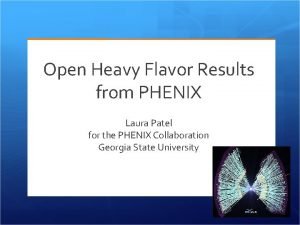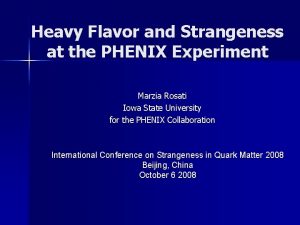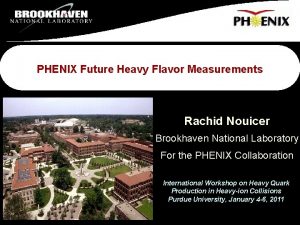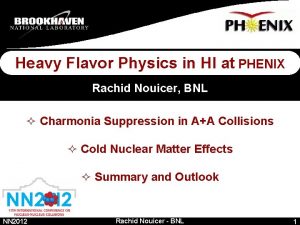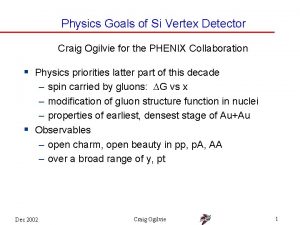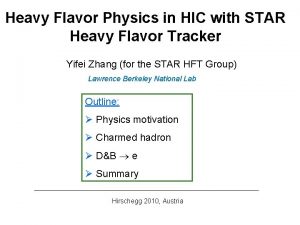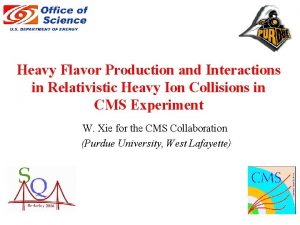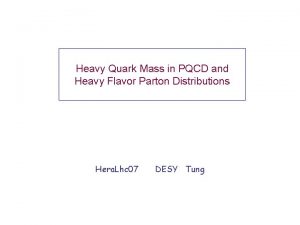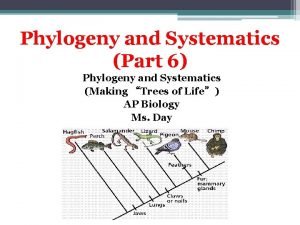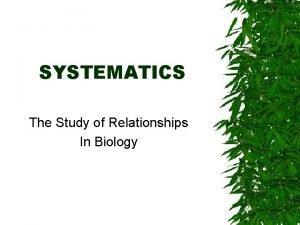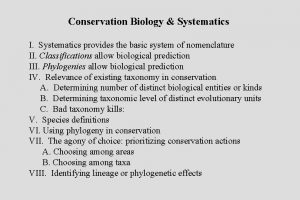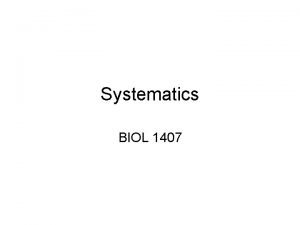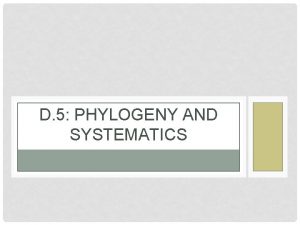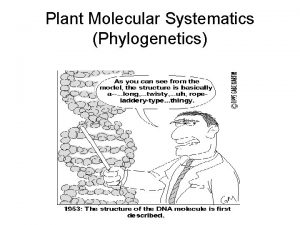Heavy flavor systematics from PHENIX Craig Ogilvie Iowa






































- Slides: 38

Heavy flavor systematics from PHENIX Craig Ogilvie, Iowa State University On behalf of the PHENIX Collaboration • Complexity of interpreting data from HI collisions • Use systematics: spectra, elliptic flow, … • Present d+Au, Cu+Cu, excitation function, … • Which leads to the complexity of interpreting d+Au… 1 cogilvie@iastate. edu Sep 27, 2013

Complexity of d(p)+A collisions � Nuclear structure functions �Shadowing, saturation at low-x �Anti-shadowing at moderate, high-x � Initial state scattering �Often modeled as increase in effective k. T �Likely largest impact at RHIC where spectra are softer �Possible collective effects �Barbara Jacak’s talk on Wed � Final state energy-loss, absorption, …. � Centrality classification 2 cogilvie@iastate. edu Sep 27, 2013

CNM I: d+Au heavy-flavor at 200 Ge. V �Non-photonic e, from heavy-flavor decays Phys. Rev. Lett. 109, 242301 (2012) , 3 cogilvie@iastate. edu Significant enhancement at moderate p. T Sep 27, 2013

CNM II: d+Au heavy-flavor at 200 Ge. V �Non-photonic e, from heavy-flavor decays Enhancement present in min-bias Effect not caused by challenges of centrality definition Phys. Rev. Lett. 109, 242301 (2012) Rd. A PT (Ge. V/c) 4 cogilvie@iastate. edu Sep 27, 2013

CNM IV: Forward, backward m from HF decay m e m Forward rapidity suppressed Likely shadowing at low-x in Au Backward rapidity enhanced anti-shadowing at higher x in Au? or increase in <k. T> due to initial scattering? 5 cogilvie@iastate. edu Sep 27, 2013

CNM III: Identified hadron spectra in d. A Phys. Rev. C 88, 024906 (2013) Cronin peak: proton ~ > HFe Why? 6 cogilvie@iastate. edu Sep 27, 2013

CNM II: d+Au heavy-flavor at 200 Ge. V Rd. A Phys. Rev. Lett. 109, 242301 (2012) PT (Ge. V/c) Does <k. T> increase have larger impact when p+p spectrum is soft? spectra = convolution of scattering + fragmentation Or recombination effects in hadronization? Or collective? Or… Opportunity for theory impact 7 cogilvie@iastate. edu Sep 27, 2013

Example with p 0 Rd. A � p 0 calc from I. Vitev � Reasonable reproduction of p 0 �Nuclear structure function �Cronin �Large initial state multiple- scattering �Final state Eloss �Need calculations for heavy- flavor Rd. A Vitev et al. , PRD 74 (2006) Phys. Lett. B 718 (2012) 482 -487 8 cogilvie@iastate. edu Sep 27, 2013

J/y CNM EPS 09 nuclear structure functions plus breakup Reasonable reproduction, misses centrality dependence BUT, charm is enhanced at moderate p. T (non-photonic electrons Rd. A>1) 1) Do these calculations reproduce open charm Rd. A >1 ? 2) If not, then more effective suppression needed for J/y 9 PRL 107, 142301 (2011) y Sep 27, 2013

J/y Au-going, high-x d-going, low-x Normalize J/y by HF? Phys. Rev. C 87, 034904 (2013) Rd. A 10 PT (Ge. V/c) Sep 27, 2013

Connect d+Au to A+A Phys. Rev. Lett. 109, 242301 (2012) , Min-bias collisions 1) Enhancement in d+Au + energy-loss suppression in A+A 2) Models must attempt to reproduce both d+A and A+A 11 cogilvie@iastate. edu Sep 27, 2013

One method to organize results Phys. Rev. Lett. 109, 242301 (2012) , Matt Durham Common suppression pattern when normalized by square of Rd. A Does this take into account impact of initial state increase of <k. T>? 12 cogilvie@iastate. edu Sep 27, 2013

Intermediate Cu+Cu: links d+A and Au+Au Peripheral Cu+Cu (yellow) Enhancement ~ central d+Au (blue) 13 cogilvie@iastate. edu Sep 27, 2013

d+Au to Cu+Cu to Au+Au Interplay of two effects CNM increases yield, competes with energy-loss suppression 14 cogilvie@iastate. edu Sep 27, 2013

d+Au to Cu+Cu to Au+Au Higher p. T CNM increases yield, stronger energy-loss suppression 15 cogilvie@iastate. edu Sep 27, 2013

Cu+Cu heavy-flavor, forward rapidity d. Au Cu+Cu forward y, Au+Au mid-rapidity Large uncertainties: Forward y in central d+Au ~ peripheral Cu+Cu 16 cogilvie@iastate. edu Sep 27, 2013

Additional lever arm: beam energy p 0 Phys. Rev. Lett. 109, 152301 (2012) charged hadrons from Au+Au p. T (Ge. V/c) Dominant energy-loss at high s Transitions to stronger Cronin effect at lower s 17 Sep 27, 2013

Need Rd. A at lower-beam energy �Not in current RHIC running plan : ( �How does Rd. A change from 200 Ge. V to 62 Ge. V �Three beam energies (62, 200 Ge. V, LHC) constrains interplay of structure function, initial state scattering �Rd. A calculations at 62 Ge. V �p Rd. A ~ 2 at 62 Ge. V �p Rd. A ~ 1. 2 at 200 Ge. V A. Accardi Eur. Phys. J. C 43, 121– 125 (2005) 18 cogilvie@iastate. edu Sep 27, 2013

Non-photonic electrons Au+Au 62 Ge. V 19 Lower beam energy changes interplay of two effects Stronger CNM competing with weaker energy-loss Forthcoming PHENIX publication spectra with smaller systematics comparison with p+p, RAA etc. If your model reproduces 200 Ge. V and 2. 76 Te. V heavy flavor RAA Final call for 62 Ge. V HF RAA prediction Sep 27, 2013

HF v 2 at lower beam energy HF flow is > 0 at 62 Ge. V, but uncertainties large 20 cogilvie@iastate. edu Sep 27, 2013

V 2 2 nd constraint on e-loss Au+Au 200 Ge. V �Low-pt Charm v 2, extent of thermalization of HF �Challenge for theory to reproduce both RAA, v 2 Many calculations, theory updates past few years 21 cogilvie@iastate. edu Sep 27, 2013

One example, P. B. Gossiaux SQM 2013 Elastic + radiative energy loss With running coupling a 22 cogilvie@iastate. edu Sep 27, 2013

Is dp. T/p. T what we should be plotting for HF? PRC 87, 034911 (2013) Suggestion in spirit of workshop, This is being worked on for HF, but no results available yet 23 cogilvie@iastate. edu Sep 27, 2013

VTX Upgrade @ PHENIX Two layers of silicon pixel detectors Two layers of silicon strip detectors Four layers in endcaps Tracks extrapolate back to collision vertex Displaced vertices charm (D), beauty (B) Requires ~ 50 mm precision e Installed 2010 -12 X D e+X Au Au B e+X e p 0 e+e- 24 cogilvie@iastate. edu X e Sep 27, 2013

VTX p+p results DCA data are fit by expected DCA shapes of • Signal components : c e and b e (right column) • Background components (left column) charm/bottom assumes PYTHIA spectra b/(b+c)=0. 22+-0. 06 Fit range : 0. 2<|DCA|<1. 5(mm) 25 cogilvie@iastate. edu 2012/10/23 Sep 27, 2013

VTX p+p results FONLL consistent with b/(b+c) data 26 cogilvie@iastate. edu 2012/10/23 Sep 27, 2013

Physics Goal Energy-loss heavy-flavor understand nature of s. QGP �Progress on understanding many details �If a model reproduces a broad range of data �Can we infer any characteristics of QGP? �Either direct via a parameter of model �Diffusion parameter �Or run same dynamical model in a “box”, e. g. radiation + collision Eloss �Infer effective transport parameters � Which characteristics of s. QGP are accessible this way and can we communicate this to our fellow physicists? �Maybe too many unsettled aspects yet 27 cogilvie@iastate. edu Sep 27, 2013

Summary � Complexity of interpreting d+Au �Levers: centrality, A, y, s, change impact of �Structure function, initial state scattering, e-loss, … �HF Rd. A enhancement up to factor of 1. 5 �Call for model calculations �Is d. Au HF a better baseline for RAA HF and d. Au J/y production? ? � Complexity of interpreting data from HI collisions �Cu+Cu HF yields smoothly connects d. Au to Au+Au �Competition between enhancement + suppression �Change this competition �Au+Au HF data @ 62 Ge. V, need d. Au running at 62 Ge. V 28 cogilvie@iastate. edu Sep 27, 2013

Backup slides 29 cogilvie@iastate. edu Sep 27, 2013

X-ranges c-cbar SPS Pb+Pb 17 Ge. V X~10 -1 RHIC Au+Au 200 Ge. V X~10 -2 LHC Pb+Pb 5. 5 Te. V X~10 -3 to 10 -4 Eskola et al. JHEP 0904 (2009) 065 30 cogilvie@iastate. edu Sep 27, 2013

RAA of heavy-flavor: from RHIC to LHC Note to Craig add citations 31 cogilvie@iastate. edu Sep 27, 2013

32 cogilvie@iastate. edu Sep 27, 2013

Charm production at 62 Ge. V reproduced by FONLL 33 cogilvie@iastate. edu Sep 27, 2013

34 cogilvie@iastate. edu Sep 27, 2013

35 cogilvie@iastate. edu Sep 27, 2013

Less bound charmonia in d. Au collisions ar. Xiv: 1305. 5516 All three systems consistent within uncertainties 36 cogilvie@iastate. edu Sep 27, 2013

Less bound charmonia in d. Au collisions ar. Xiv: 1305. 5516 y’ suppression stronger than J/y for more central d. Au collisions Stronger effective breakup cross-section? 37 cogilvie@iastate. edu Sep 27, 2013

Photon in d. A Phys. Lett. B 718 (2012) 482 -487 38 cogilvie@iastate. edu Sep 27, 2013
 Charm mesom
Charm mesom Ogilvie syndrome diet
Ogilvie syndrome diet Lemur information retrieval
Lemur information retrieval Josh ogilvie
Josh ogilvie Section 2 modern classification
Section 2 modern classification Taxonomy vs systematics
Taxonomy vs systematics Traditional systematics
Traditional systematics Systematics deals with
Systematics deals with Systematics vs taxonomy
Systematics vs taxonomy Shratey
Shratey Phenix scan
Phenix scan Phonix scan
Phonix scan Professional and social jargonisms
Professional and social jargonisms Professional and social jargonisms
Professional and social jargonisms Mc flavor fries
Mc flavor fries Komponen non gizi jenis zat warna dan flavor terdiri dari
Komponen non gizi jenis zat warna dan flavor terdiri dari Operating system flavor
Operating system flavor Contoh flavor enhancer
Contoh flavor enhancer Contoh flavor alami
Contoh flavor alami Flavor pyramid
Flavor pyramid Cocktail flavor wheel
Cocktail flavor wheel Contoh flavor enhancer
Contoh flavor enhancer Off flavors
Off flavors Su(3) flavor symmetry
Su(3) flavor symmetry Chapter 10 lipids nature's flavor enhancers
Chapter 10 lipids nature's flavor enhancers What is umami taste
What is umami taste Taste vs flavor
Taste vs flavor Komponen non gizi jenis zat warna dan flavor terdiri dari
Komponen non gizi jenis zat warna dan flavor terdiri dari Foodstuffs aroma
Foodstuffs aroma Does salt lose its flavor
Does salt lose its flavor Fema gras certification
Fema gras certification Craig marlatt geography
Craig marlatt geography Craig davies ebrd
Craig davies ebrd Craig marlatt geography
Craig marlatt geography Paul craig thompson
Paul craig thompson Craig rackley
Craig rackley Gentamicin 5 mg/kg nomogram
Gentamicin 5 mg/kg nomogram Craig ferrans
Craig ferrans Blue whale facts
Blue whale facts
